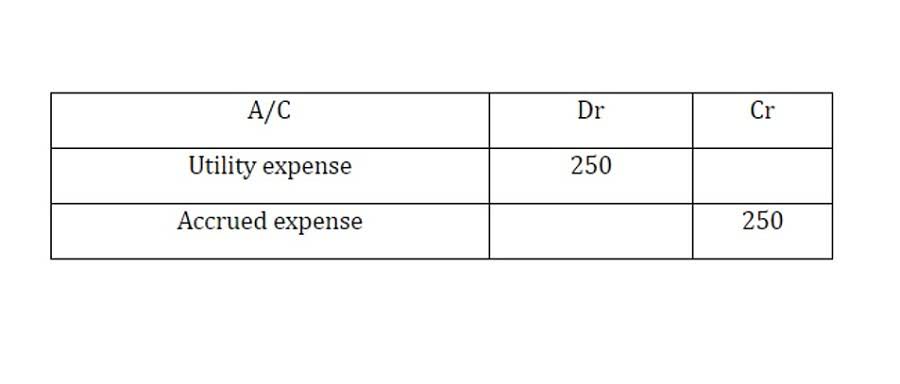
The difference between actual costs incurred and the flexible budget amount for that same level of operations is the budget variance. Budget variances can indicate a department’s or company’s degree of efficiency since they emerge Accounting for Marketing Agencies from a comparison of what was with what should have been. We’re preparing this performance report on a summary basis for an entire year, but a company might prepare this kind of report using more detail and presenting it on a monthly basis. This type of report enables the management to compare the actual performance with the budgeted figures, providing insights into the areas where cost control measures can be implemented.

✅ Better performance evaluation
For this reason, the amounts used to construct the planning budgets are estimates, not actual amounts. Organizations use historical data along with sales and production projections to make the estimates used in the planning budgets. Planning budgets are prepared before the period begins and based on the planned level of activity for the period. At the end of the period, the actual level of activity as well as the actual financial results are known. If the planned budgeted activity is different than the actual activity, the planning budget cannot be used to evaluate performance during the period.

Monthly Budget Performance Report
- PEMF therapy is a nonpharmaceutical intervention for treating chronic pain, acute injuries, and overall cellular regeneration.
- It is usually not appropriate to use a planning budget during the performance evaluation phase of operations.
- Writing a budget performance report may sound or look difficult if you are not sure with what you are doing.
- In other words, you can pump more investment into the areas firing on all cylinders, while doubling down on addressing inefficiencies elsewhere.
- Second, given the actual level of operations, management can compare actual costs at actual volume with budgeted costs at actual volume.
- This type of report enables the management to compare the actual performance with the budgeted figures, providing insights into the areas where cost control measures can be implemented.
- To illustrate the computation of budget variances, assume that Leed’s management prepared an overhead budget based on an expected volume of 100% capacity, or 25,000 units.
The variances represent the differences between the flexible budget and the actual results. Flexible operating budget and budget variances illustrated As stated earlier, a flexible operating budget provides detailed information about budgeted expenses at various levels of activity. The main advantage performance budget of using a flexible operating budget along with a planned operating budget is that management can appraise performance on two levels. First, management can compare the actual results with the planned operating budget, which enables management to analyze the deviation of actual output from expected output. Second, given the actual level of operations, management can compare actual costs at actual volume with budgeted costs at actual volume.

Practice Video Problem 1: Preparing a planning budget
On a traditional income statement, costs are classified as product or period. The cost formula for mixed costs has both a variable and a fixed component. Typically, utility companies charge a fixed monthly fee plus a charge per unit for the services used. For example, assume that electricity is $50 per month plus $0.25 per kilowatt used. The cost formula for electricity would be $50 plus $0.25 times the quantity used, which is noted as $50 + $0.25Q, where Q equals the activity driver, kilowatts in this case.

- The $3,000 in increased cost of goods sold expense is unfavorable (U).
- Assume once again that Leed actually produced22,500 units during the period.
- Using the revenue and cost formulas for the shop, prepare a flexible budget for March.
- The reforecasted flexible budget adjusts revenue and expenditure targets to match the actual level of activity.
- The type of budget that has been carefully thought out from scratch, and the actual budget performance that often than not does not always be the same with the planned budget.
- Budgeted fixed costs would remain the same becausethey do not change based on volume.
- A flexible budget performance report is a document that compares the actual results of a business to the results of the flexible budget for a specific period.
Using the revenue and cost formulas for the shop, prepare a flexible budget for March. Flexible budget variances are used in the performance evaluation phase. There are two main types of variances evaluated when flexible budgets are analyzed—activity variances and revenue or spending variances. Variances are classified as favorable or unfavorable depending on the perceived effect of the difference on the organization.
How Is a Flexible Budget Performance Report Prepared?
Flexible budget variances are the discrepancies found when comparing the planning budget, flexible budget, and actual operating results. Activity variances are classified as favorable or unfavorable depending on the perceived effect of the difference on the organization. However, she sold more units than planned, so her projected revenue is $7,500 higher. Since projected revenue for the actual number of units sold is more than planned revenue, the variance is favorable (F). The $4,500 increase in gross Online Accounting margin and the $3,790 increase in net operating income are also favorable (F).

